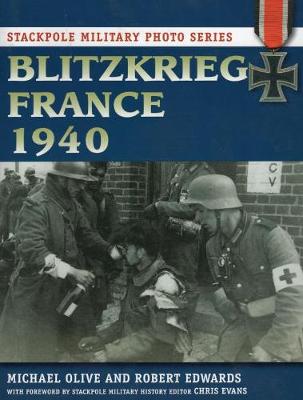Stackpole Military Photo
6 total works
Features many rare and previously unpublished photographs of the German Invasion of the Soviet Union Operation Barbarossa began on 22 June 1941. Across the a stretch of land over 1,800 miles long over 4,5 million troops from the Axis powers marched to deliver what they thought would be a resounding blow to Soviet power. Here, Stackpole present an extensive photograph collection, many rare and previously unpublished, of the German invasion of the Soviet Union. Hundreds of photographs are presented featuring men, tanks and other weapons, uniforms and battlegrounds. This is an ideal reference for World War II enthusiasts, scholars and modellers.
Complete visual history of Rommel and his Afrika Korps A fantastic new addition to the Stackpole Military Photo Series, Rommel's Desert Warriors, strives to provide a complete visual history of Rommel and his Afrika Korps in the desert of North Africa. Erwin Rommel was appointed commander of the Afrika Korps in the February of 1941. The intention was to create a unit that could act as a "blocking force" to support the Italian army struggling against British forces in Libya. It was during this time in North Africa that Rommel earned the title 'The Desert Fox.' The North African Campaign became a desperate game of hide and seek as the British and Germans rallied against each other with varying degrees of success in the harsh wasteland. Rommel's Desert Warriors is a fantastic visual exploration of the hard- fought campaign for Africa during World War II. Included are hundreds of photos of men, tanks and other weapons, uniforms and desert terrain, many of which are rare and have never before been published. This is an ideal reference guide for World War II history fans, scholars, and modellers
As June began, the situation in France was bleak for the Allies. With the evacuation of the BEF, the French Army and remaining British troops were left to defend a long front from the Channel to Sedan with minimal forces and no reserves. This was compounded by the fact that much of their armor and heavy weapons had been lost during the fighting in May. On June 5, the Germans renewed their offensive and quickly broke through the French lines. Nine days later Paris fell, and the French government fled to Bordeaux. With the French in full retreat south, the British evacuated their remaining 215,000 troops from Cherbourg and St. Malo (Operation Ariel). On June 25, the French surrendered, with the Germans requiring them to sign the documents at Compiegne in the same rail car that Germany had been compelled to sign the armistice ending World War I. German forces occupied much of northern and western France, while an independent, pro-German state (Vichy France) was formed in the southeast under the leadership of Marshal Philippe Petain.
* Hundreds of photos, many of them rare and never published before
* Photos of men, tanks, weapons, uniforms, terrain, and much more
* Excellent complement to the narratives of the Stackpole Military History Series
* Ideal reference for World War II history fans, scholars, modellers, and reenactors
* Hundreds of photos, many of them rare and never published before
* Photos of men, tanks, weapons, uniforms, terrain, and much more
* Excellent complement to the narratives of the Stackpole Military History Series
* Ideal reference for World War II history fans, scholars, modellers, and reenactors
A visual history of the German armed forces at war on the brutal Eastern Front during World War II. The Third Reich began its war against the Soviet Union with Operation Barbarossa in June 1941. After a series of lightning victories in which millions of Soviet troops were killed, wounded, or captured, the German invasion bogged down outside Moscow that winter. What followed were punishing months of freezing cold conditions, strained supply lines, and bloody battles with a regrouped Soviet enemy fighting for the existence of its homeland. This book contains hundreds of photos, many of them rare and never published before, illustrating men, tanks, weapons, uniforms, terrain, and much more. It is also an ideal reference for World War II history fans, scholars, modellers, and reenactors.
The German Soldier in World War II
by Michael Olive and Robert J. Edwards
Published 15 September 2014
Panzers Forward collects photos of all varieties of German armor, from the smaller tanks of the early war to the gigantic Tigers that came later, on all fronts - North Africa, Sicily and Italy, France, and of course the Eastern Front. Written by a trio of experts who have lived and breathed panzers for decades, the captions identify vehicles as well as their location and units, explain markings and camouflage, and give background information on the vehicles and their battles.





